November 20, 2011 – Throughout history Mexico has experienced many violent conflicts. The most famous perhaps is the Mexican Revolution from 1910-1920. The revolution happened because Mexican’s of every class and social standing could no longer tolerate the corrupt dictator President Porfino Diaz who had ruled for 30 years. This revolution proved fatal to many revolutionary leaders and heroes and over two million Mexican men & women during this 10 year period.
Francisco I. Madero challenged Diaz in the 1910 general election and was subsequently jailed. Following Madero’s release (and defeat) he declared the Díaz regime illegal and called for revolt to overthrow the Porfiriato, starting on November 20, 1910 which called for a revolt on November 20, 1910 which now marks the start of the Mexican Revolution.
There were three very strong revolutionary groups throughout the revolution that contributed to the rise and fall of the leaders. These were lead by Emiliano Zapata, Francisco “Pancho” Villa, and Pascual Orozco. Zapata was from the south and his troops covered that area while Villa and Orozco were from the north covering many areas along the US border. In 1911 Orozco and Villa began taking control of cities in the northern areas while Zapata took control of Cuautla and cut off the road to Mexico City. Orozco and Villa captured Ciudad Juarez and these events combined convinced Diaz to resign and forced him to flee to Europe. Even though he fled, Diaz left a large army under the command of General Victoriano Huerta and a provisional president. Soon after he left Zapata rode into Mexico City where he met up with Madero and subsequently declared president of Mexico.
Unfortunately Madero’s presidency and liberal democracy was short lived for lack of action. First Zapata withdrew his support then the inaction convinced Villa and Orozco to also abandon him. Huerta covertly met with an U.S. Ambassador Henry Lane Wilson because they always believed Madero was too closely tied to the revolutionaries who wanted land reform. In 1913 Huerta, the ambassador and Diaz’s nephew, Felix Diaz, conspired to overthrow Madero and the resulting coup d’état installed Huerta as president. President Madero, vice-president Suarez, and General Angeles were arrested on February 22, 1913 and later shot. Huerta was now the president and revolutionary violence exploded.
Huerta was universally hated and three revolutionary forces rose in the north led by Pancho Villa, Alvaro Obregon and Venustantio Carranza. In the south Emiliano Zapata was still fighting. Throughout 1913 and 1914 Huerta suffered one defeat after another and in the summer of 1914 all four revolutionary forces came together in Mexico City to defeat Huerta. Huerta, realizing that he was beat, fled from the city. In August of 1914 Carranza declared himself president.
The alliance was short lived and in 1915 Carranza was driven from Mexico City by Villa and Zapata. The fighting continued until Villa, Zapata, and Obregon installed Eulalio Guitierrez as president and Zapata agreed to leave Mexico City. Soon new revolutionary alliances formed and although Villa and Zapata stayed loyal to each and Guitierrez as president, Obregon and Carranza came together. In April 1915 Villa’s and Obregon’s forces fought the Battle of Celaya where Obregon was victorious. Carranza was able to reclaim the presidency however the conflict continued with Zapata and Villa continuing to suffer incredible losses.
In April of 1919 Carranza set a ingenious trap for Zapata and he was assassinated. The news of Zapata’s death traveled quickly and Carranza became a hated man. Carranza quickly lost many of his supporters including Obregon and realizing that tried to flee the country but was caught and shot May 21, 1920 just outside of Mexico City. Adolfo de la Huerta installed as in term president until elections could be held. In subsequent the general elections Álvaro Obregón was elected president won and most of the revolutionary violence finally ceased.
During this decade many Mexicans wanted no part of the violence, human carnage or revolution so they fled as refugees to the United States. Other factors included that made people leave were economic disaster, chaos and social disorganization. Almost 900,000 Mexican immigrants came to the United States between 1910 and 1920. Besides escaping the violence of the revolution, Mexican people came to the U.S because they saw it as an opportunity for work. The U.S. were very receptive to this immigration as they understood the benefits of cheap labour and felt some obligation to provide Mexicans with a better lifestyle.
Historians debate the exact end of the actual “revolutionary period”. From a military standpoint, it ended with the death of the Constitutional Army’s primer jefe (First Chief) Venustiano Carranza in 1920, and the ascension to power of General Álvaro Obregón. Coup attempts and sporadic uprisings continued, for instance in the Cristero Wars of 1926–1929. Effective implementation of the social provisions of the 1917 Constitution of Mexico and cession of all revolutionary activity did not occur until the administration of Lázaro Cárdenas (1934–1940).


